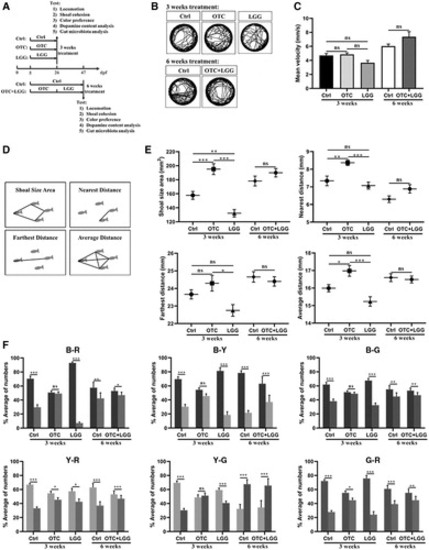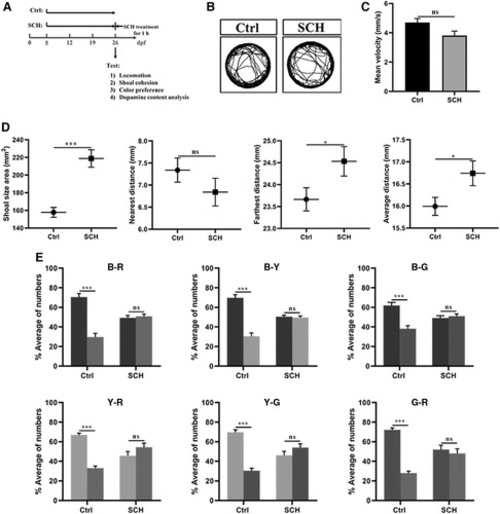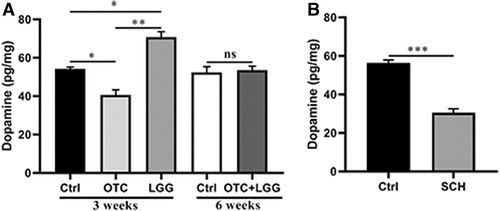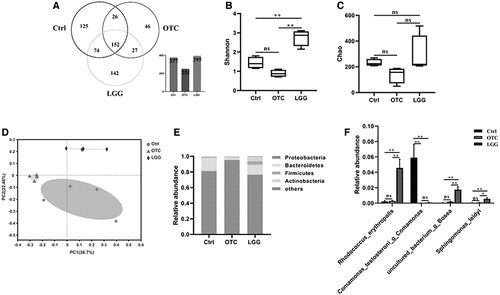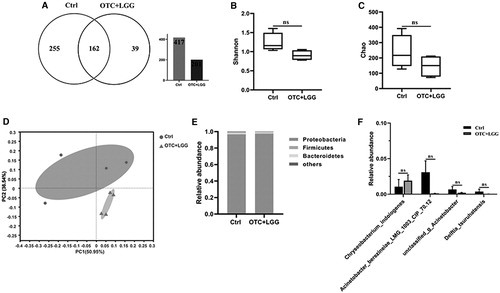- Title
-
Dopamine Level Affects Social Interaction and Color Preference Possibly Through Intestinal Microbiota in Zebrafish
- Authors
- Wang, J., Zheng, F., Yin, L., Shi, S., Hu, B., Qu, H., Zheng, L.
- Source
- Full text @ Zebrafish
|
FIG. 1. Different treatments affect social interaction and color preference in zebrafish. |
|
FIG. 2. SCH23390 affects shoal interaction and color preference in zebrafish. |
|
FIG. 3. Dopamine level analysis of the treatment groups. |
|
FIG. 4. Effect of OTC or LGG exposure on the intestinal microbial composition. |
|
FIG. 5. Effect of OTC and LGG exposure on the intestinal microbial composition. |

